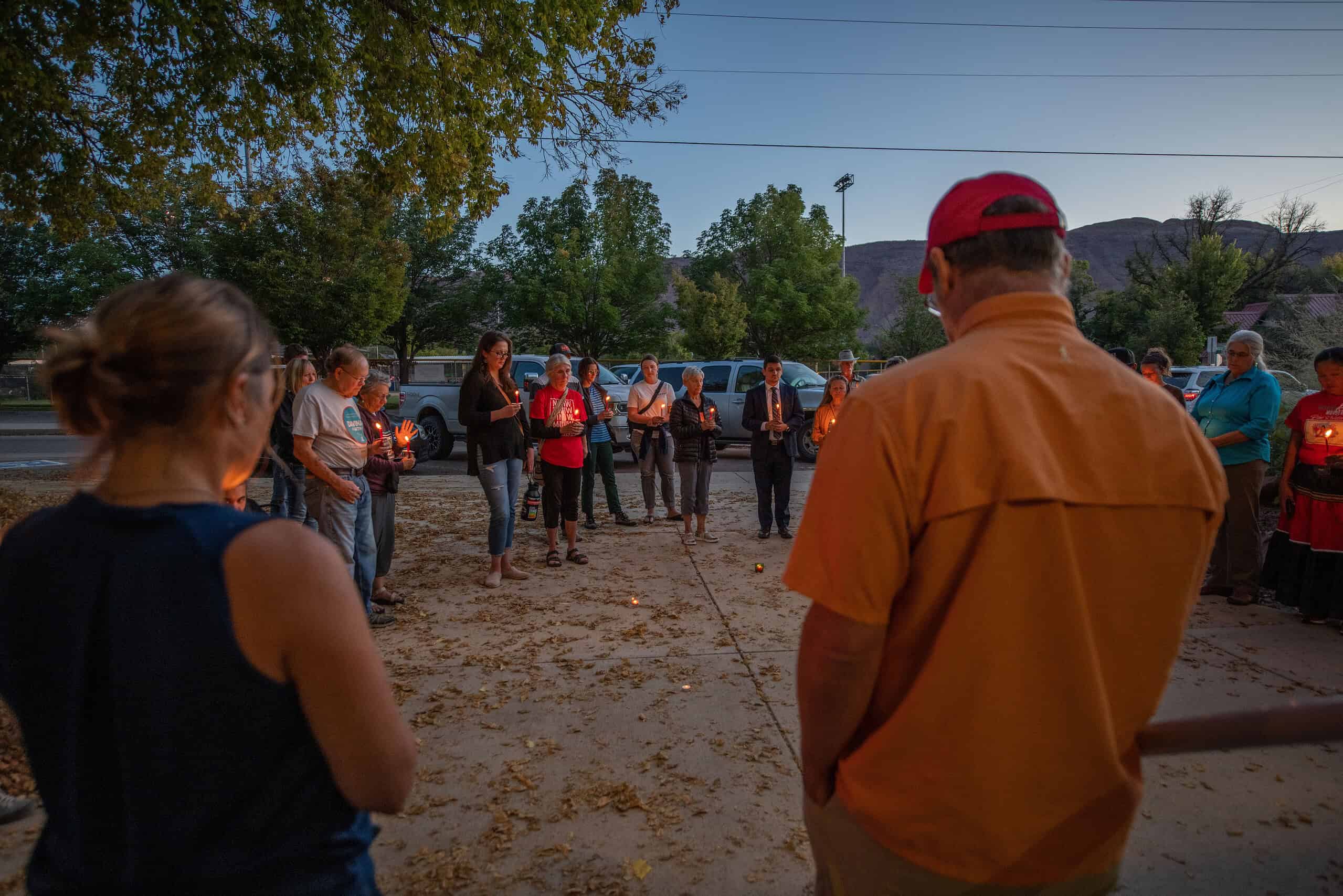Some information may be outdated.

On the lawn outside City Hall, the Moab community gathered to celebrate the traditions of Native Americans around the area in celebration of Indigenous People’s Day on October 9.
The state of Utah recognizes the same day as Columbus Day, an official public holiday that closes government offices and gives state workers a paid day off.
The City of Moab issued a proclamation, stating this day is an “opportunity for everyone in Moab to celebrate and recognize the diversity of our community, especially the contributions and the enduring culture and traditions of all Native American and Indigenous People.”
Former mayor Emily Niehaus advocated for and initiated the event during her term and continued to support the effort after she left office. According to her, the city hall and the lawn belong to everyone, and so “whoever’s day it is, they should have the front lawn to throw a party.”
17 states and numerous cities and schools have also recognized the day as Indigenous People’s Day, “flipping the script” on what the holiday means, Niehaus said.
“It’s been a long time coming,” said Talibah Begay, who traveled to Moab from Shiprock, New Mexico to give a singing performance about the acknowledgement of Indigenous people.
The event included performances by Begay, Kylie Jim from Gallop, New Mexico, and Ryedale Largo and the Diné and Mescalero Dance Group. They served traditional Kneel Down bread provided by Bidii Baby Food, and corn and Navajo tea from the Grand County High School Native American Club.
“It’s important to be a beacon for the community and highlight who we are,” said organizer Pete Sands with Rez Western, LLC. The organization travels around the Colorado Plateau giving presentations that bring creative outlets to the reservation. He emphasized that there’s no lack of talent on the reservation, but rather a lack of resources.
In bringing together both native and non-native and people from a variety of cultures, he hoped to help all people realize their roots, and reflected that Moab is a true melting pot.
With three kids of his own, he said he hopes to inspire youth to be proud of their culture.
“It’s not common anymore for our younger generation to embrace who they are, embrace where they come from, speak their language. They feel embarrassed in who they are,” Begay said. Indigenous Peoples’ Day allows them to “be who they are for a day.”
For Noelle, a member of the Native American Club at the high school, she enjoys learning “about her culture and other cultures and their history.” Gathering like this was special to her, she said, because it means “knowing there are other native, Indigenous people around here.”
For Sands, this work is “new, old, and innovative. The tradition is alive.”
Sands said he hoped to highlight different Tribes who live around Moab—not just members of the Navajo Tribe live here, he said. In the future, he said, he wants to bring the Apache Crown Dancers to town.
The City of Moab acknowledges the Moab Valley is the ancestral homeland of the Nuche (Ute), Nuwu (Paiute), Newe (Shoshone), Kutsipiuci (Goshute), Dine (Navajo), and Ancestral Pueblo people.
“It shows this little community cares,” Sands said.
Appreciate the coverage? Help keep local news alive.
Chip in to support the Moab Sun News.





